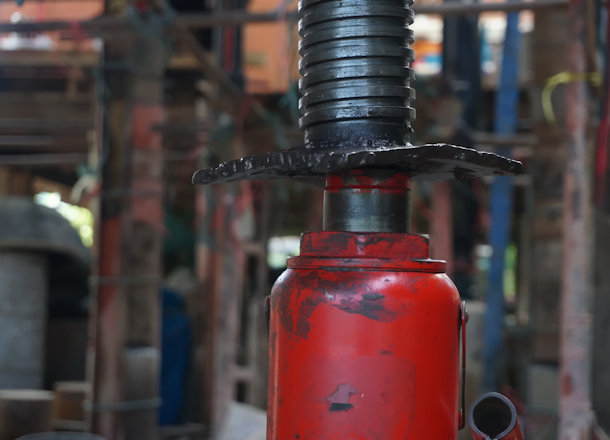Even though there are about a million different things you can use a hydraulic jack for on a construction site, they too often end up forgotten until the moment they’re needed. That can easily mean little to no safety training for new hires and too-widely spaced maintenance.
Hydraulic Safety Part 1: Maintenance
For a lot of contractors, the solution to a poorly performing jack is simply to toss it in the nearest dumpster. However, there are a lot of simple and cheap repairs that can keep your jack running for longer if you perform frequent maintenance on your tool. After all, it’s better to know your jacks are ready to go before you need to lift up a house or set a new porch post, not during the process.
Regularly maintenance is simple stuff, including:
● Inspection. Check jacks that are used infrequently for their ability to hold a load every six months. While you’re at it, make sure all safety features are working correctly and that all parts appear to be in good shape.
● Winterization. Hydraulic jacks can and do freeze when exposed to cold environments. Antifreeze specifically designed for these tools will help prolong the life of your seals and other sensitive parts. Check with your jack’s manufacturer for specific recommendations and how to winterize your tool.
● Lubrication. When a jack is new, it’s got a sort of oily coating that seems to get onto everything, but over time, that lube wears out, dries up or gets wiped away. That’s why it’s so important to keep your jack lubed. When you’re doing your regular inspection, give your tool a little lubrication, too.
Hydraulic Safety Part 2: Proper Use
If you’ve never given your employees formal training in how to use a hydraulic jack, you may be surprised at how they think they should be using this device. There’s a lot of risk involved with a hydraulic jack, from dangers to structures, the tool itself, and especially the operators.
When teaching proper use of a hydraulic jack, consider:
● Load limits. Hydraulic jacks have a limit to how much they can lift, even if you’re using several together for something like a small structural repair. Consider your jacks, how much weight they can each handle, and how much stress you’ll be placing on each jack in use.
● Limit of travel. Just because you can extend your jack a certain amount doesn’t mean that you really can use all that travel. Like load limits, hydraulic jacks have a limit on how much they can safely travel and maintain a safe load lift. Keep your jacks clean and ensure the load limit indicators are always easy to see.
● Proper placement. Choosing a proper location for the jack is also vital to its safe performance. You should only use hydraulic jacks on a flat, even surface, even if that means you have to dig a bit or make a cut to create safe footing. Also, remember to distribute the load across multiple jacks evenly to prevent overloading any single hydraulic.
● Blocking. Above all else, always block jacked loads, especially if they’re going to be elevated for an extended period of time. Your choice of blocking materials will vary based on what you’re lifting and how high, but common blocking materials include masonry, wood, and, in some instances, jack stands.
What are your best safety tips for hydraulic jacks? How about life lessons learned the hard way? Tell us in the comments!


